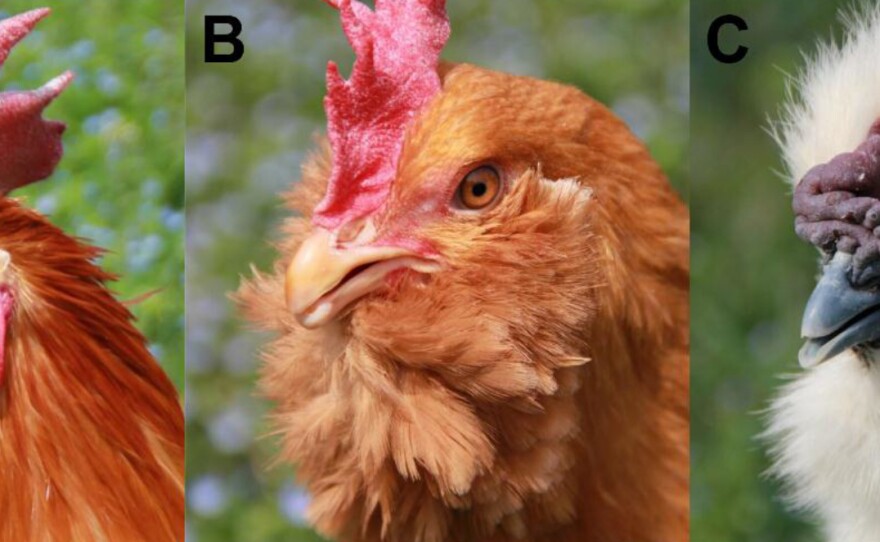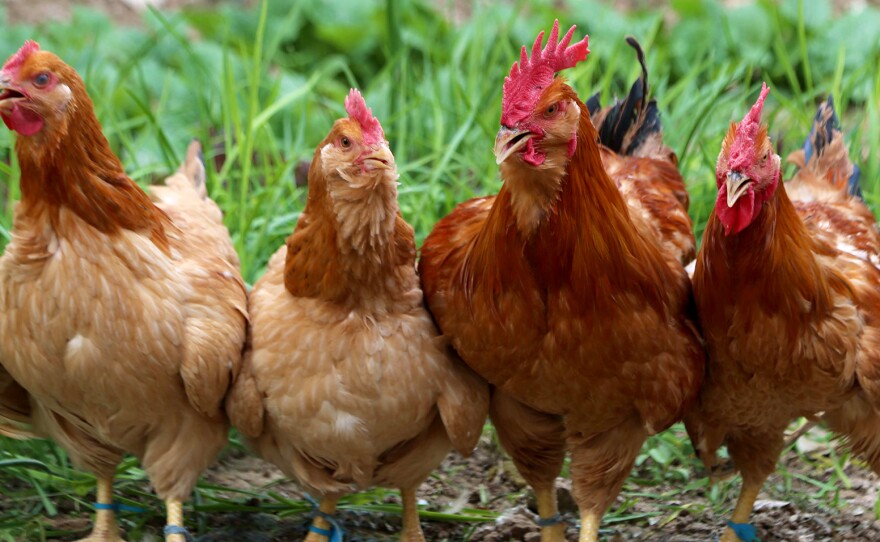

Move over, human hipsters, you're not the only ones growing outrageous facial hair.
For years, farmers have noticed that some chickens have tufts of elongated feathers around their face and beak, making it appear like they had grown a beard. The cause of the feather beards was a mystery. Now, thanks to scientists in China, the mystery of the bearded chicken has been solved.
The answer appears in a study published in PLOS genetics on Thursday. Chinese scientists compared the DNA of bearded chickens to nonbearded chickens. The results led them to investigate a gene, HOXB8. Bearded chickens had multiple copies of HOXB8 and surrounding genes. Nonbearded chickens only had one copy of HOXB8.
After they found the gene duplication, the scientists wanted to know about the activity (called gene expression) of HOXB8. Genes can be controlled like volume on a radio. The gene can be turned up, blasting loudly, or played at barely a whisper. The scientists took skin samples from around the faces of chickens to determine whether the HOXB8 gene was being "turned up" more in bearded chickens than in normal chickens.
In chickens of all ages tested, the HOXB8 gene was highly expressed in the facial skin of bearded chickens, but not on at all in the facial skin of nonbearded chickens. In other words, the gene was being played loudly in the bearded chickens, but was silent in the normal chickens.
As of now, the scientists don't believe that beards provide the chickens with any evolutionary advantage. Although the researchers can only speculate why these genetic differences came about, they are most likely due to thousands of years of domestication and breeding practices. As you can see for yourself, these bearded birds are certainly something to behold. (Lady chickens, too!) Maybe breeders selected them for that very reason, the authors suggest.
One of the study's authors, Ying Guo, is a geneticist at the China Agricultural University. Guo writes in an email to The Salt, "We have no knowledge of the exact time when [beards] formed. But we believe that it has hundreds of years of history."
In other words, chickens have been growing beards way before it was cool.
Copyright 2016 NPR. To see more, visit http://www.npr.org/.






